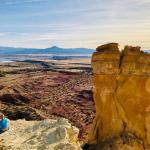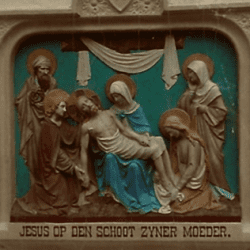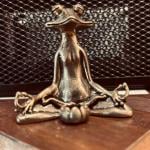Guest Writer: Rev. Kimberly Braun.
Mysticism sure has become a buzzword these days, whether it is a desire to recognize yourself as a mystic, discover how to surrender into mystical experience, learn from people we consider mystics or even stand skeptically apart from the notion, the word-mysticism- evokes response.
When I see this kind of relationship to a notion it gets me curious “Why?’ Why now? Why are human beings using the word more, and spiritual teachers labeling what they do as ‘mystical?’ What is there to learn about the interest?”
It seems there could be a spectrum of reasons ranging from discouragement with the state of the world and hoping for something more, to the belief it is a connection to our essential nature. I fall on the extreme latter end of that spectrum and would say (as a mystic and theologian,) that the urging in this direction is arising from God/Source itself at our very center. It is Source itself beckoning a new awakening into itself; it is the home where from which we come, to which we are going and where all fulfillment can be found and all potential can be realized.
Googling the word, yes, I esteem internet searches to add substance towards any inquiry, I found mysticism has a striking polarity in its very definition, in more than one source. Here I am drawing upon Merriam-Webster and Wikipedia. The leading entry when you look up the word tends to be something along the lines of, ‘The experience of mystical union or direct communion with ultimate reality reported by mystics,’ and, ‘The belief that direct knowledge of God, spiritual truth, or ultimate reality can be attained through subjective experience (such as intuition or insight,) or even, ‘Belief that union with or absorption into the Deity or the absolute, or the spiritual apprehension of knowledge inaccessible to the intellect, may be attained through contemplation and self-surrender.’ The second entry is something of the opposite and goes like this, ‘Vague speculation: a belief without sound basis,’ or, ‘Belief characterized by self-delusion or dreamy confusion of thought,’ or even, ‘A theory postulating the possibility of direct and intuitive acquisition of ineffable knowledge or power.’
That is pretty incredible that a concept could postulate that it is either a direct experience of what is ultimately real or a complete delusion. How would you describe mysticism? Does even saying the word conjure up desire for experience or wondering if it’s all made up?
I want to tell you a story to help us penetrate this whole issue of mysticism. It is a story about a small group of men who were Crusaders.
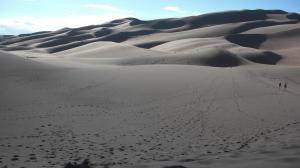 In the 1200s there was a movement in Christianity to recover the Holy Lands. The whole idea that land could belong to a group just because there is spiritual history related to their beliefs is another article for another time.. The movement was called ‘The Crusades,’ and gave license for Christians to take up arms and violently pillage, kill and aggressively take what was defined as theirs, all in the name of ‘truth.’ It was a terrible atrocity, but not uncommon in our human history where we have so often rested into a moral imperative as justification when condoning or participating in violence.
In the 1200s there was a movement in Christianity to recover the Holy Lands. The whole idea that land could belong to a group just because there is spiritual history related to their beliefs is another article for another time.. The movement was called ‘The Crusades,’ and gave license for Christians to take up arms and violently pillage, kill and aggressively take what was defined as theirs, all in the name of ‘truth.’ It was a terrible atrocity, but not uncommon in our human history where we have so often rested into a moral imperative as justification when condoning or participating in violence.
Anyway, a small band of men from England, wishing to be part of the Crusades, organized their own venture. They took their weapons and headed by horseback to the Holy Land. The story goes that they came to the caves where it is reputed Elijah fled from Queen Jezebel and experienced God in the whisper of the wind. Entering one of the caves they had a direct illumination of the Divine and all of them, every single one of them, realized how ungodly their mission was and dropped their swords. The consolation was so great they decided to stay there. Not just for a day, or a week, but for the rest of their lives.
So they became hermits that lived in community. Each of them had a separate cave where they would spend hours in contemplation. They built a small chapel, a kitchen and a few other small buildings to provide places for them to gather as brothers. They titled themselves, ‘The Brothers of the Blessed Virgin Mary of Mount Carmel,’ and celebrated the Virgin Mary and Elijah as their founders.
This group, now called Carmelites, has its entire roots and ultimate focus upon being a mystic. As you may have experienced in your own life when you are ‘in the flow of Spirit,’ everything conspired for the group to become an official religious order. They made it under the wire in being accepted as one of the 4 approved mendicant orders (Franciscan, Augustinian and Dominican being the others,) with very little history behind them. This was during a time when the Christian Catholic church was eliminating the founding of new orders and even disbanding many already in existence. The European lands were bursting with more new orders and charisms than could be supported by the centralized structure of the establishment. The movement of all these new forms of Christian living was a direct response to the less than healthy reality of the hierarchy interwoven with the society and all the strengths and weaknesses of that situation. The grass roots revivals happening was a living testament of Spirit alive within the hearts of those truly wishing to imitate Christ.
The mendicant orders are the shining example, the very word mendicant means the members would rely solely upon donations to survive. It took money and power and influence out of the picture. The mendicant founders were all humans alive in their time except for the Carmel Order who claimed mystical founders in Mary and Elijah. What they all had in common was the practice of taking three vows: poverty, chastity and obedience as a way of living out the real teachings of Jesus.
Carmelites, quite surprisingly because they were the new kids on the block, make it into this group. The group’s defining charism and service to the world was to ‘walk in God’s Presence like Mary and Elijah.’ Period. It is perhaps one of the strongest mystically focused orders of all times in Christian history. The original group of men found their happiness in the direct experience of what is beyond human understanding. Like Mary they pondered all things in their heart and like Elijah they stood, face covered, at the mouth of the cave to encounter God, not in the tumultuous, striking elements like fire, storm and wind but rather in the tiniest of whispers. It is this charism that has brought us the timeless writings of Teresa of Avila, John of the Cross, Therese of Lisieux, Edith Stein and countless other Carmelites named and unnamed. Some of my own favorite poetry of Mary is written by an anonymous French Carmelite nun in the compilation, ‘As Milk Is Poured,’ This nun expressed the Virgin Mary to be an, ‘Invasion More Imperative than Mighty Rivers Seaward Tide.’
There is so much we could unpack here by the history of Carmelites coming into existence in the Holy Land but there is one question I want to answer today,
‘What is a foundational truth the mystical Carmelite path presupposes and purports? It is this…
The path of direct encounter with Source/Spirit/God comes from surrendering into the very stillness within the center of your being.
In this center, time and space, (still part of our human reality in this created world,) move into proper place of being an aspect of reality and a way to have context, but not the container of reality. And it is here, in this center that the human being finds him/herself to be a mystic.
When did you last find yourself absorbed into a moment, and how would you define it? Usually those with whom I work, and I would concur from my own life story, say it has qualities of harmony, peace, bliss and insight. Time seems to fall away and a resting into timelessness seems to provide complete security in an indescribable feeling of coming home.
The mystic- comes home to themselves- and speaks to us from this home. This home seems to be a living paradox having boundlessness and solid security. It is like having no ground and standing on solid ground at the same time. For this I draw upon the words of a master, John of the Cross who said so eloquently in his poem, Dark Night of the Soul,
‘On a dark secret night starving for love and deep in flame, O happy lucky flight unseen I slipped away, my house at last was calm and safe.’ He goes on to say that the path has, ‘no other light to mark the way but fire pounding in my heart.’ His words are so utterly intimate, so keenly insightful in recognizing the place within where true transformation in Spirit happens. It is not only the renowned holy ones of our history that write to this end, Deuteronomy proclaims, ‘My word/law/love is not too mysterious or remote for you. It is not high in the sky where you must grow wings to reach it, it is already within you on your heart and lips,’ (ref. Deut. 30.)
It is imperative for you to ask if this is so, to wrestle like Jacob, and probe like every holy person that ever lived for it is how you will find truth, peace and fulfillment.
In addition to theology I also love math so here is a little logic for you. If creation is created good, and this creation lives and moves and has its being in God, then there must be an unfailing pulse as the center point of each person, and all creation. That would be an application of the transitive property of equality from basic geometry.
But how do you find out if it is true?
Surrender.
And surrender into this experience takes everything.
But the seeming loss is not loss at all, it is what creates within us the spaciousness to find and be found in God. From here we actually possess all things. Does that sound arrogant- ‘to possess all things?’ It is not, it is audacity. Turn to any of the writings of Carmelite mystics and you will find both them shaking a fist at and falling into bliss with God, all impelled by the Greatness pulsing at their center. Audacity is quite different than arrogance for it is the former that takes us to the level of connection that is true intimacy, an intimacy for which we are made. If you were to use the Carmelites as a way to learn more you will see women and men who discover God, not only in the moments of solitude and contemplation but also in every face, every plant, and every star. Their witness humbles us to take the slope inwards that seems like an abyss. But Abyss (Source,) calls to abyss (you.) Carmel holds a vigil candle that humanity may realized its Divinity; it proclaims from the mountain top that you are ‘wired for God,’ (ref. to theologian Karl Rahner;) and it reminds us over and again there is an invitation beckoning, ‘Remain in Me….for God is Love and those that remain in Love, remain in God and God in Them.’ (ref. John 15.)
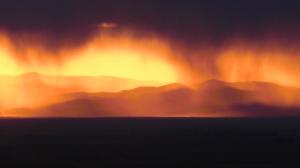 Their revelation comes in a whisper of Spirit, a mystical breath, and says to you and me, ‘YOU are the Holy Land.’
Their revelation comes in a whisper of Spirit, a mystical breath, and says to you and me, ‘YOU are the Holy Land.’
Check out Kimberly’s Carmelite course HERE:
Or join her this July in the trip of a lifetime to 6 Carmelite monasteries in Spain! Click HERE to learn more.
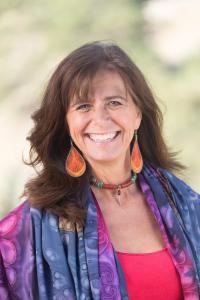 Kimberly Braun, Minister, M.A., CSP, retreat facilitator and meditation coach has been impelled from and within her contemplative experiences from the age of 5, with over ten of her years spent as a Carmelite monastic nun. Her Masters in theology and psycho-spiritual development was completed in 2001 in Washington D.C. Kimberly is playful, deeply inquiring and intelligent in living out her personal mission is to inspire YOU to connect with, come home to, and live from Source/God deep within. She was meditation faculty at the renowned Omega Institute for 7 years, is a TEDx speaker and has 3 CDs and a book entitled, Love Calls, Insights of a former Carmelite nun and is now available for private sessions, keynotes, retreats, online courses and more: www.kimberlybraun.com, www.essencetribe.com
Kimberly Braun, Minister, M.A., CSP, retreat facilitator and meditation coach has been impelled from and within her contemplative experiences from the age of 5, with over ten of her years spent as a Carmelite monastic nun. Her Masters in theology and psycho-spiritual development was completed in 2001 in Washington D.C. Kimberly is playful, deeply inquiring and intelligent in living out her personal mission is to inspire YOU to connect with, come home to, and live from Source/God deep within. She was meditation faculty at the renowned Omega Institute for 7 years, is a TEDx speaker and has 3 CDs and a book entitled, Love Calls, Insights of a former Carmelite nun and is now available for private sessions, keynotes, retreats, online courses and more: www.kimberlybraun.com, www.essencetribe.com
XX – Roger, Creator and primary writer of The Holy Kiss blog.
Rev. Roger Wolsey is an ordained United Methodist pastor who directs the Wesley Foundation at the University of Colorado at Boulder, and is author of Kissing Fish: christianity for people who don’t like christianity


